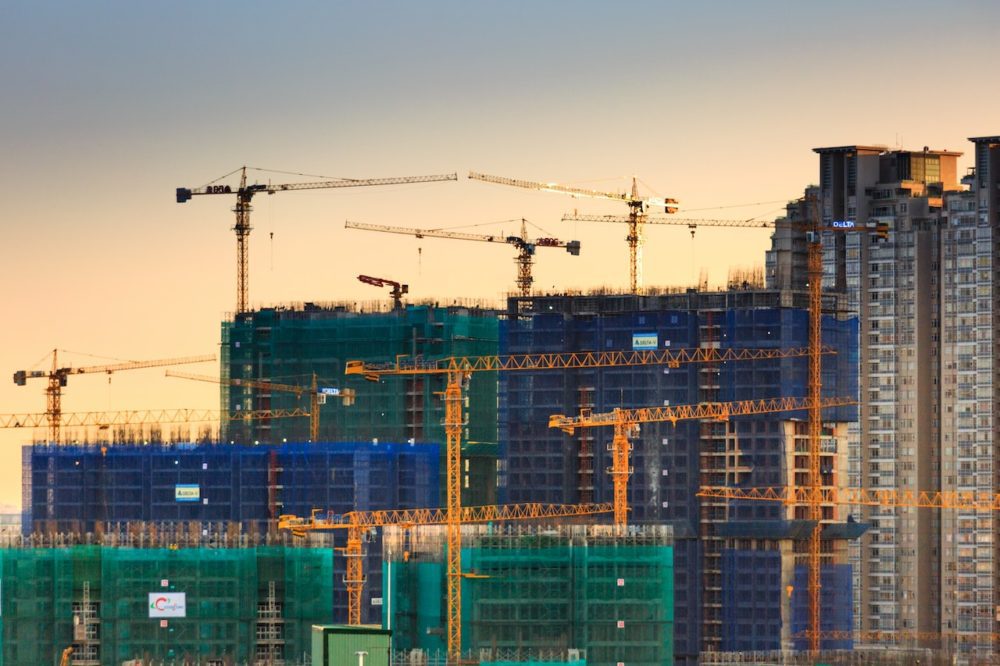Introduction
Faced with the urgency of climate change, the building sector, which is a major emitter of greenhouse gases, is called upon to undergo a profound transformation. To meet this challenge, the French Climate and Resilience Act calls for a roadmap to be drawn up for each high-emission sector. The building industry has thus mobilized to draw up its own roadmap for decarbonizing the life cycle of buildings. This document, the fruit of a collective effort involving nearly 1,000 players in the sector, proposes a series of levers for decarbonization and changes in public policy, as outlined below:
Proposals from the building sector
Lever 1: Off-site decarbonization
The first proposal recommends setting up a Research and Development (R&D) program focused on the creation of a trusted entity. This entity would be tasked with certifying the carbon emission reduction potential of off-site activities. They also suggest launching “Calls for Expressions of Interest (AMI) for off-site decarbonization”. These AMIs would be used to promote industry-wide demonstrator projects, with high standards in terms of carbon emissions reduction. Finally, they recommend using public procurement as a lever to encourage the development of off-site activities.
Lever 2: Building adaptability
The Building and Public Works (BTP) industry is also suggesting changes to local urban planning schemes (PLU) to make it easier to incorporate scalability principles into building design. Scalability enables a building to adapt to new uses or changes in configuration without the need for major works.
To this end, they are proposing to introduce specific scalability requirements when building permits are submitted. In addition, they recommend reinforcing the justifications to be provided when applying for a demolition permit, in order to encourage renovation rather than demolition. Finally, they recommend the implementation of a future decree on adaptability studies, which would make it possible to assess the adaptation potential of buildings right from the design phase.
Lever 3: Resource efficiency
Industry professionals emphasize the need to optimize the use of resources in order to act on t. To this end, they recommend the creation of specific indicators to measure this efficiency, from design to demolition. These indicators could incorporate various parameters, such as the quantity of materials used, the durability of the building’s various components, or the potential for reusing and recycling materials at the end of their life.
They also encourage the development of innovative construction techniques that facilitate waste sorting. This could mean using easily separable materials, or introducing efficient sorting procedures directly on the worksite.
Finally, they call for the mobilization of public procurement to support the adoption of new recycling technologies and the use of substitute materials. Thanks to its economic weight, public procurement can play a decisive role in promoting more sustainable practices, such as the use of recycled or low-carbon footprint materials in public construction projects.
Lever 4: Leverage local resources and solutions
Construction sector players suggest that the operational tools available to professionals should be coordinated. The aim is to identify, qualify and quantify local resources and solutions. To this end, they propose the creation of a national observatory to centralize local data.
In addition, they recommend stimulating and, if necessary, relocating the production of materials and equipment. This would be done taking into account local specificities, such as specific needs, prevailing construction methods, architectural requirements, and other relevant factors.
Thus, by drawing on local resources and solutions, the construction sector could not only reduce its carbon footprint, but also stimulate the local economy and encourage the adaptation of buildings to the local context.
Lever 5: Resource conservation through reuse and recycling
With a view to preserving resources, the building industry is planning to showcase local architecture and traditional know-how. They stress the importance of maintaining the architectural heritage of buildings, an essential element in the revitalization of historic centers.
In addition, they advocate the creation of an information system, in the form of a portal, which would list the main local resources with a low carbon footprint. This system would promote the use of these resources.
Finally, they suggest investing in the creation of an observatory dedicated to local resources, and in support for pilot or experimental projects. These initiatives could lead to innovations and experiments in resource conservation.
Conclusion
These proposals demonstrate the building industry’s determination to act collectively to reduce greenhouse gas emissions from the construction sector. They are a call to action for a profound transformation of the sector, towards a society more attentive to the health and well-being of its members, as well as to the preservation of our earth’s resources.
At Upcyclea, we support real estate players wishing to decarbonize their business and respond to the levers offered thanks to AI.
Source : https://www.ecologie.gouv.fr/sites/default/files/Proposition decarbonation roadmap.pdf
